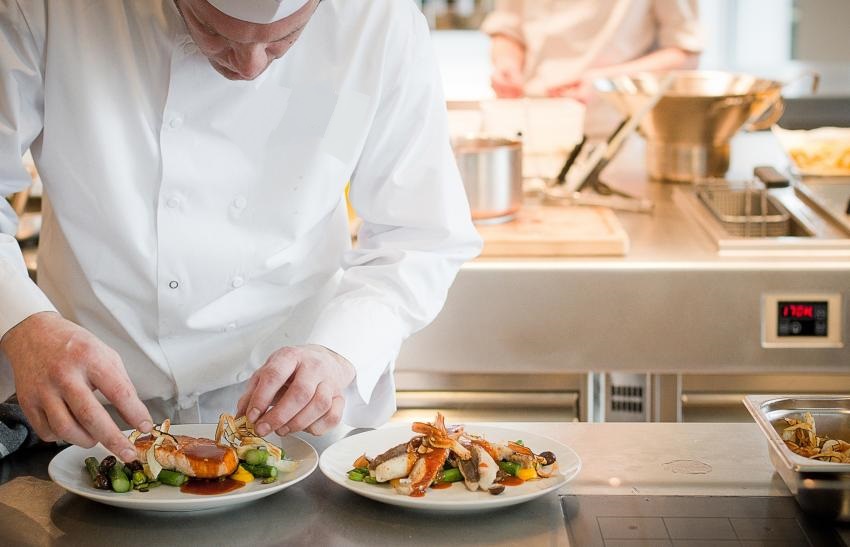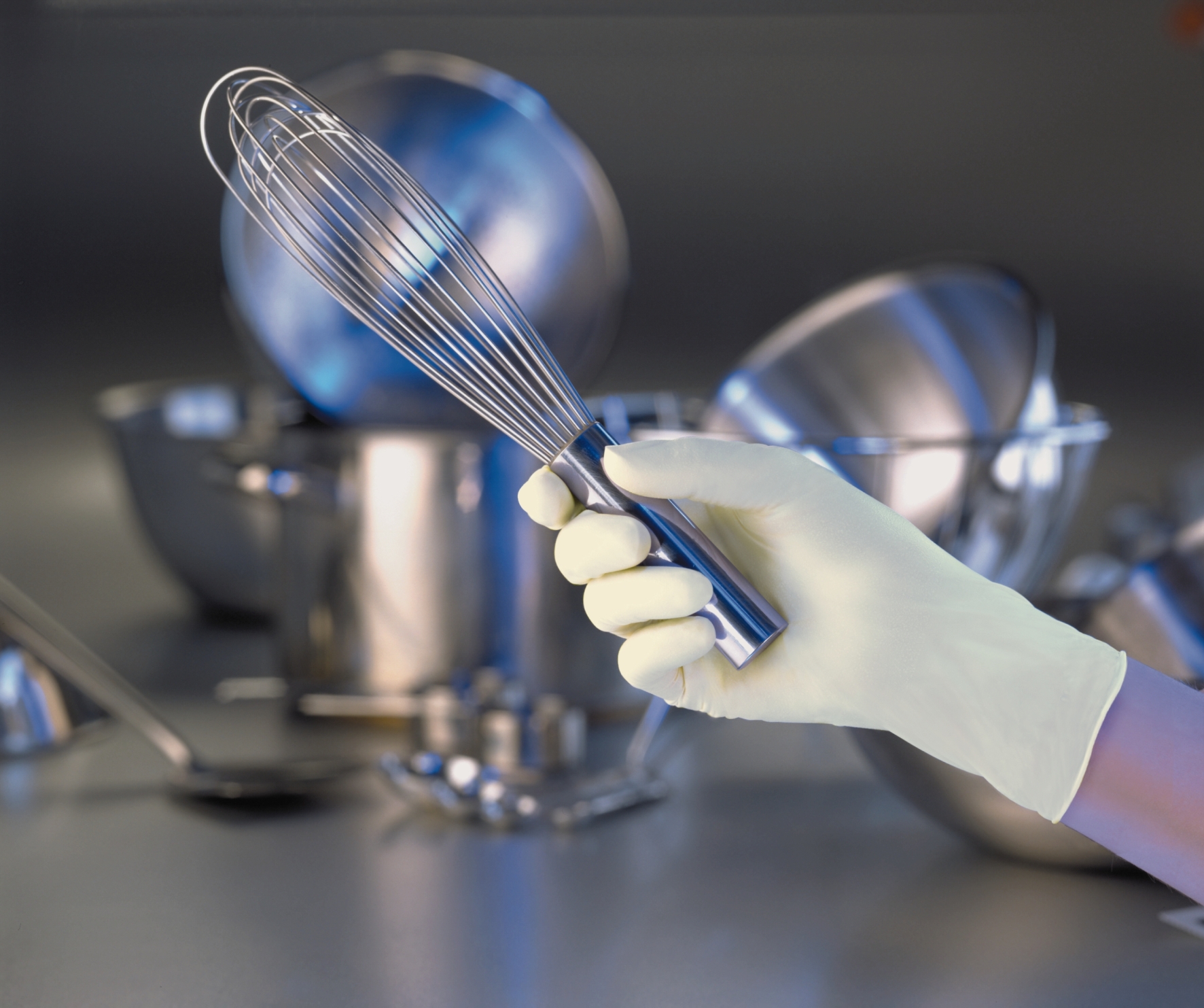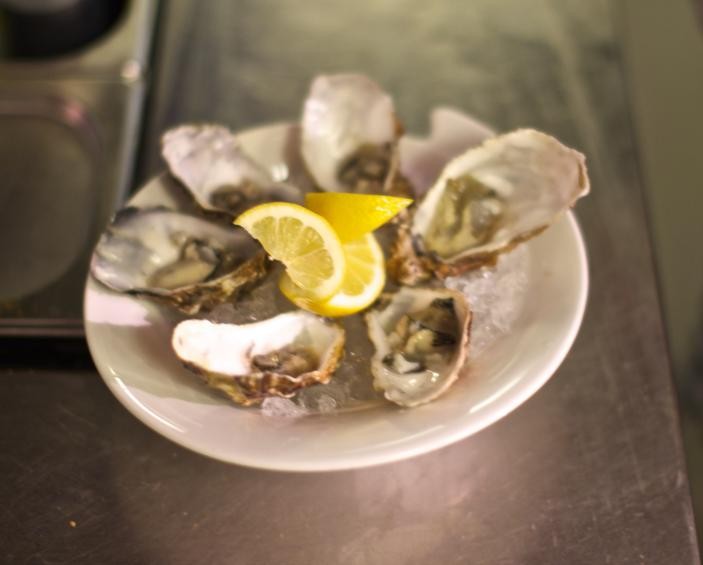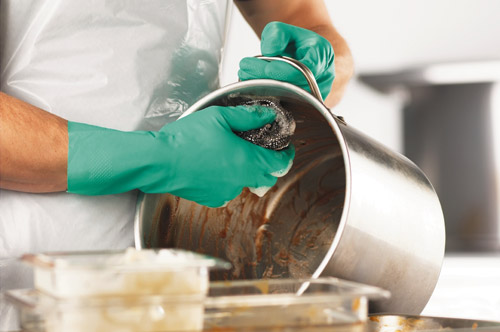Ice Machines, Beverage Dispensers & Other Overlooked Food Safety Hazards
At the end of the spring semester in our campus food production lab, we’re fortunate to have the opportunity to hit pause and reset for the summer and prepare for fall—a luxury many foodservice operations don’t often get. During this time, we can deep clean, shut down equipment, and perform a thorough reset of the space. While some school foodservice programs may also have this seasonal window, many commercial kitchens operate year-round and rarely have the chance to step back in this way.
Among the many pieces of equipment that we focus on cleaning during this time are the ice machine and soda dispensers. We clean them throughout the year, too, but they are pieces of equipment that are sometimes neglected. I can see why some may forget about them. In food safety training, much attention is paid to keeping food at safe temperatures, avoiding cross-contamination, and ensuring hand hygiene. While the spotlight is often on cooking and holding procedures, some food safety hazards are hiding in plain sight: ice machines, beverage dispensers, and other equipment that’s easy to forget during daily cleaning routines.
Ice is considered a food under FDA guidelines, which means it must be handled and stored with the same care as any other consumable. Yet, ice machines are notorious for harboring mold, slime, and bacteria, often due to irregular cleaning and maintenance. Ice scoops left on top of the machine, hands reaching into bins, or contaminated utensils can all introduce pathogens. When was the last time you inspected the water line to your ice machine – or even more importantly, the filter? Just as with any surface, if they are not cleaned and sanitized regularly, the risk of contamination only grows.
In foodservice operations, ice is an important component of the service and production processes. It is used for both beverages and for cooling of food. Thus, it is important to be diligent in cleaning and monitoring ice machines.
…Food safety isn’t just keeping hot foods hot and cold foods cold; it’s about the unseen risks that accumulate over time.
Soda fountains and beverage dispensers can also be a hidden hazard. Sugary syrups and low-acid liquids provide a perfect breeding ground for bacteria and yeast, especially in and around the nozzles and drip trays. These areas often go unnoticed in daily cleaning routines and can develop biofilms—thin layers of microbial growth that are hard to remove and can contaminate drinks. In most cases, the trays themselves are dark in color, often black, meaning spotting these biofilms is not easy to do visually.
Another issue arises with the internal tubing of beverage systems. Without proper flushing and sanitization, residue can build up, leading to off-flavors and microbial risks. In both commercial and institutional settings, ensuring that staff are trained to clean these systems according to the manufacturer’s specifications is essential.
Beyond ice and beverages, there are many overlooked surfaces that require consistent attention. Refrigerator gaskets can collect food particles and condensation, creating a moist, dark environment where mold and bacteria thrive. Handles of reach-in coolers, microwave buttons, and faucet levers are frequently touched but seldom cleaned with the same rigor as food prep surfaces.
Food safety isn’t just keeping hot foods hot and cold foods cold; it’s about the unseen risks that accumulate over time. By creating comprehensive cleaning schedules that include non-obvious equipment and surfaces, and by regularly training staff on the “why” behind those practices, foodservice operations can protect both their customers and their reputations. After all, preventing illness doesn’t just happen on the line—it happens behind the ice machine, under the soda fountain, and everywhere in between. Risk Nothing.
READ MORE POSTS
Be Aware When You Prepare – Food Prep Tips
The subject of food preparation covers some very broad, basic principles within food safety, with many steps associated with “risk” in some recipes. Certainly, preparation steps are where the most mistakes have occurred if a foodborne illness should occur. Outbreaks usually happen when more than one mistake occurs during prep, but sometimes it only takes one. Cooking is the biggest risk for raw foods, but all foods become ready-to-eat foods at some point in final preparation steps and that’s where the most care is required.
Food Gloves & Latex Allergy Education
Politicians joke about the endless stretch of rubber chicken dinners they may consume in an election year. For people with a latex allergy, such a prospect may be no laughing matter. While latex serves as an effective barrier glove material and has the best fit because of its elasticity, the risks associated should not be ignored. The solution is not simple and many options are available for operators today. It should always be mentioned that handwashing (before putting on gloves) is always the primary barrier to contamination and gloves are considered a good secondary barrier.
Foodborne Illness Myths & Facts
“It must have been something I ate.” That’s the typical statement when a person develops some relatively minor symptoms from food. Maybe not severe enough to go to the doctor so you choose to tough it out without medical care. Sudden onset of flu-like symptoms such as onset of stomach cramps, diarrhea, vomiting and fever could possibly mean you are the victim of a foodborne illness. The illness is sometimes referred to as “food poisoning”, but it’s often misdiagnosed.
Don’t Compromise: Clean and Sanitize
The subject is cleaning and sanitizing. Chefs, food service directors, managers and staff try to practice safe food-handling at every turn in the kitchen. Don’t let that effort go down the drain by slacking off on the many aspects of sanitation. That includes dish and ware-washing techniques (pots, pans, equipment), and cleaning all the areas that give us that “neat as a pin” appearance in your customers eyes. Customers seldom fail to bring that soiled silverware or glass with lipstick on it to the attention of the manager or wait staff. Improperly cleaning and sanitizing of food contact equipment does allow transmission of pathogenic microorganisms to food and ultimately our customer.










